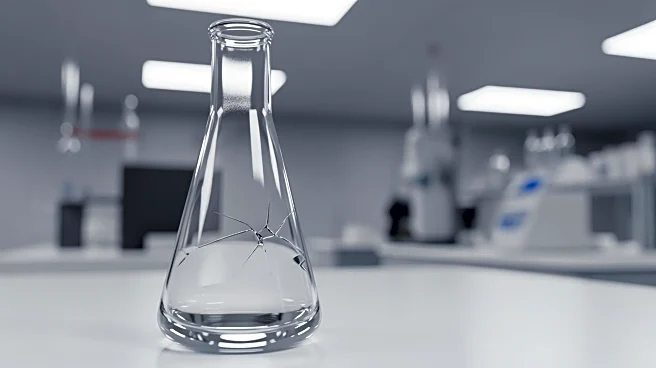What's Happening?
Researchers from the University of Warwick and Monash University have identified a new antibiotic compound, pre-methylenomycin C lactone, which exhibits significantly higher activity against drug-resistant
Gram-positive bacteria compared to existing antibiotics. This discovery was made by exploring intermediates in the methylenomycin biosynthesis pathway, a process that had been overlooked in previous studies. The compound was found to be over 100 times more potent than methylenomycin A, particularly effective against bacteria responsible for MRSA and VRE infections. The research, published in the Journal of the American Chemical Society, highlights the potential of this compound to combat antimicrobial resistance (AMR), a major global health threat.
Why It's Important?
The discovery of pre-methylenomycin C lactone is significant as it offers a new approach to addressing the growing challenge of antimicrobial resistance. AMR poses a serious threat to public health, with drug-resistant infections leading to increased mortality rates and healthcare costs. The new compound's enhanced potency and resistance profile could provide a crucial tool in the fight against superbugs like MRSA and VRE, which are classified as high-priority pathogens by the World Health Organization. This breakthrough could lead to the development of more effective treatments, potentially saving millions of lives affected by resistant infections.
What's Next?
The next phase involves pre-clinical testing of pre-methylenomycin C lactone to assess its safety and efficacy in real-world applications. Researchers plan to explore the compound's structure-activity relationship and mechanism of action further. The scalable synthesis developed by Monash University will facilitate the creation of analogs for detailed study. Successful pre-clinical trials could pave the way for clinical trials and eventual commercialization, offering a new weapon in the arsenal against AMR.
Beyond the Headlines
This discovery underscores the importance of revisiting and exploring known biological pathways for hidden potential. The identification of potent intermediates in familiar organisms like Streptomyces coelicolor challenges existing paradigms in antibiotic research, suggesting that valuable compounds may be overlooked in traditional approaches. This could inspire a shift in research strategies, focusing on the exploration of biosynthetic pathways to uncover new therapeutic agents.











